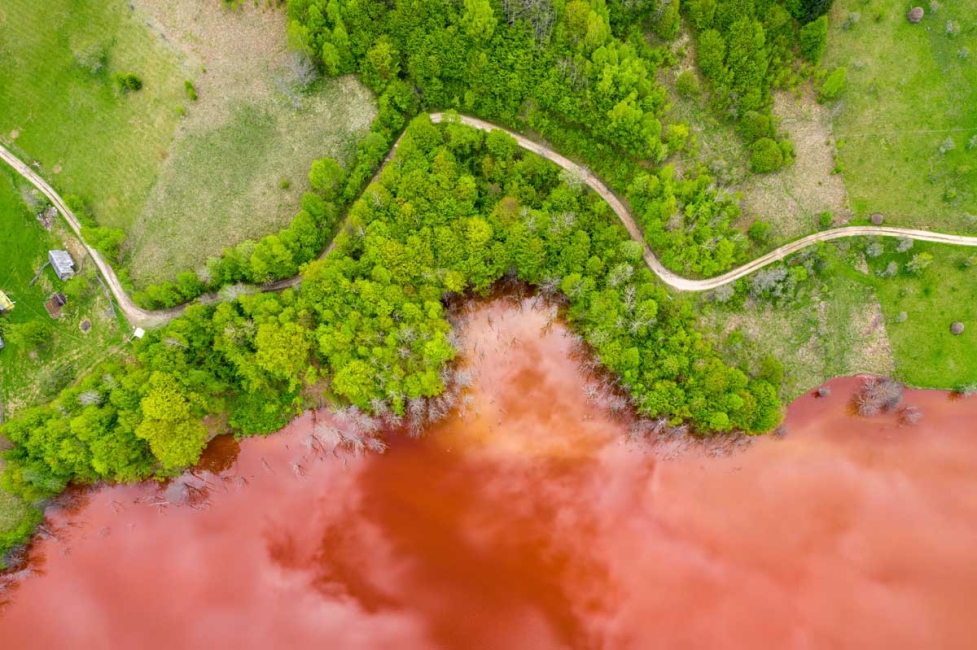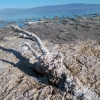
A brownfield is real property whose reuse or redevelopment is complicated by the presence or potential presence of a hazardous substance, pollutant, or contaminant. Congress added this definition to the Comprehensive Environmental Response, Compensation and Liability Act (CERCLA), recognizing that lingering contamination can deter investment and threaten public health. The United States Environmental Protection Agency (EPA) estimates that hundreds of thousands of such sites exist nationwide, and its Brownfields Program funds assessment and cleanup to help communities put them back to productive use. (19january2017snapshot.epa.gov)
Stormwater controls that work well on clean sites may behave very differently where soil or groundwater carries residual hydrocarbons, heavy metals, solvents, or other hazardous constituents. When runoff is forced to infiltrate contaminated material, it can dissolve and mobilize pollutants, expanding plumes or introducing new pathways to groundwater and surface water. For many brownfields the property owner has also installed an engineered cap, pavement, building slabs, geotextile layers, or clean fill, to keep people and rainfall from contacting the contaminated zone. Any stormwater practice that breaches or saturates that cap can undercut the remedy and create new liability. (epa.gov, spcwater.org)
Best Management Practices (BMPs) whose primary purpose is infiltration, dry wells, infiltration trenches and basins, unlined rain gardens and bioretention cells, sand filters designed for full infiltration, and permeable pavements that drain directly to native soil, are generally discouraged on brownfields. EPA guidance and many state MS4 manuals treat proximity to a known hazardous-waste or brownfield site as a key infeasibility criterion for mandated infiltration volume. (epa.gov) In Minnesota, for example, infiltration BMPs are prohibited where infiltrating water could contact contaminants; projects that eventually received approval had to verify that soils beneath each proposed facility were demonstrably clean or had been fully excavated and replaced. (stormwater.pca.state.mn.us)
Where infiltration is off the table, designers can still meet water-quality and channel-protection goals by slowing, filtering, re-using, or routing runoff away from contaminated media. Practices often selected include:
Filtration-only bioretention or stormwater planters. These systems place a geomembrane liner below the planting soil and install an underdrain that conveys treated water to a protected discharge point, so nothing percolates into the native soil. (wiki.sustainabletechnologies.ca, ci.lathrop.ca.us)
Vegetated swales, filter strips, or bioswales constructed over a cap. When sub-soils are sealed, these linear features act more like surface flow-through filters, capturing sediment and associated pollutants before routing flow to a storm drain.
Extended-detention and wet ponds with low-permeability liners. By detaining runoff for the design storm and allowing sedimentation and biological uptake, they reduce peak discharge and pollutant loads without risking downward migration.
Underground vaults, media filters, and hydrodynamic separators. These proprietary or prefabricated systems fit well on tight urban parcels where cap integrity and shallow utilities limit open surface options.
Green roofs and rainwater harvesting. Both intercept rainfall before it ever touches contaminated soil; cistern overflows can be sent to a lined practice.
Agencies typically require a Phase I/II Environmental Site Assessment during redevelopment. Where residual contamination remains, stormwater designers should document how the selected BMPs avoid increasing exposure, demonstrate that any excavations stay above the cap or are backfilled with certified clean material, and obtain written concurrence from the brownfield regulatory program. Operation and maintenance plans must spell out how liners, underdrains, and outlet controls will be inspected so that future property owners do not inadvertently convert a filtration system into an infiltration device. In some states an environmental covenant is recorded on the deed to preserve these features for the life of the remedy. (epa.gov, stormwater.pca.state.mn.us)
Brownfields need stormwater management just as much as any other development, but the wrong BMP can spread contamination and undo expensive remediation. By avoiding direct infiltration and favoring lined filtration, detention, or reuse practices, designers can protect groundwater, satisfy regulatory requirements, and still meet modern stormwater performance standards. Proper documentation and long-term maintenance assurances ensure that a site’s redevelopment remains both economically and environmentally sustainable.
 Wetlands are often described as the kidneys of the watershed because they filter, slow, and transform the water that passes through them in ways that …
Wetlands are often described as the kidneys of the watershed because they filter, slow, and transform the water that passes through them in ways that …
 Field inspections of catch basins, manholes, culverts, and outfalls form the foundation of responsible stormwater management. These routine checks giv…
Field inspections of catch basins, manholes, culverts, and outfalls form the foundation of responsible stormwater management. These routine checks giv…
 Habitat disruption around drainage structures is often subtle at first, and many of the earliest signs tend to appear during ordinary field work rathe…
Habitat disruption around drainage structures is often subtle at first, and many of the earliest signs tend to appear during ordinary field work rathe…
 Harmful algal blooms have become one of the most pressing water quality problems in many regions, and their rise has been linked to a complicated blen…
Harmful algal blooms have become one of the most pressing water quality problems in many regions, and their rise has been linked to a complicated blen…
 The Salton Sea is one of California’s most unusual and tragic landscapes, a place shaped by accident, transformed by ambition, and ultimately pu…
The Salton Sea is one of California’s most unusual and tragic landscapes, a place shaped by accident, transformed by ambition, and ultimately pu…
 *The screenshots used in this article are from Roadwurx, an asset management software created for road maintenance departments. Managing a town’…
*The screenshots used in this article are from Roadwurx, an asset management software created for road maintenance departments. Managing a town’…